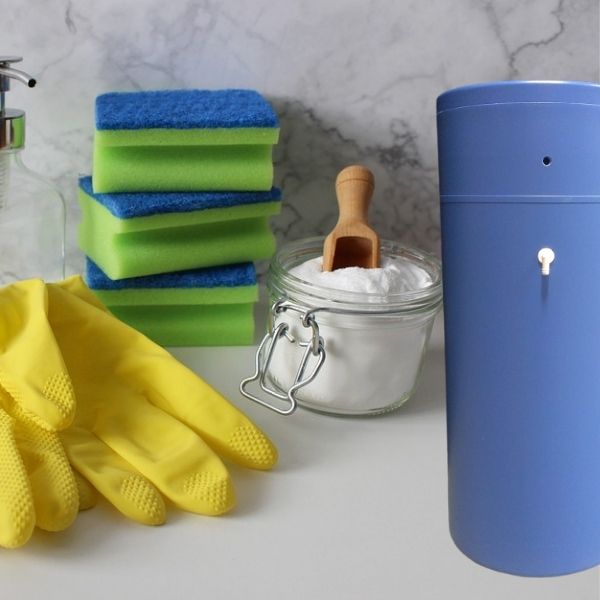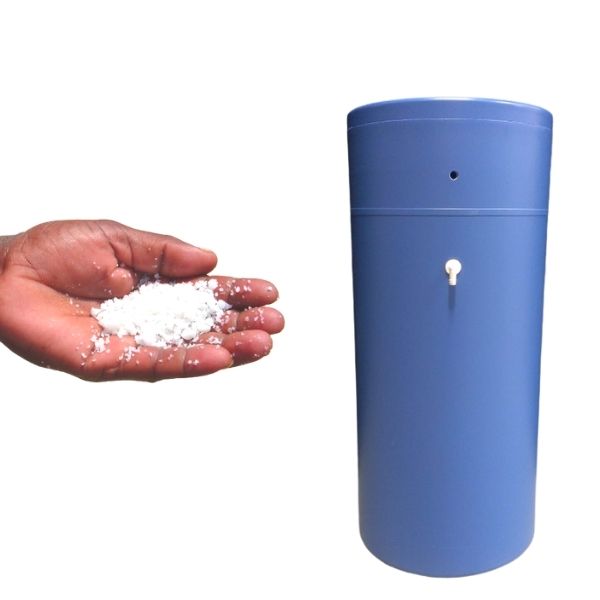Know the Basic Parts of Your Water Softener
Water softeners can be studied from their various big and small components, but three of them can be considered the main building blocks of a water softener.
Water softener brine tank
A water softener’s brine tank stores salt and uses it to make a saltwater solution that is utilized during the regeneration process of the brine tank.
Water softener resin tank
This tank contains a resin bed of sodium ions which are used during the softening process.
Control valve
As the name suggests, this valve is the central operating system of the entire water softener. It is located at the top of the resin tank, and it controls the flow, direction, and rate of the water in the softener.
How to Clean a Water Softener Resin Tank?
Keeping your resin tank clean is essential to ensure a clean water supply. In this part, we will discuss the ideal way to clean your resin tank.
First, find the best time to clean the water softener tank – which usually is when the salt is running low.
Cut off electrical supply to the water softener and remove the tank from the system. Use a bleach water solution to clean the tank thoroughly.
Make sure the bleach solution is diluted enough so that it does not affect the resin beads.
Another option is investing in an iron-removing cleaner and using the owner’s manual to clean a water softener.
You can also choose to clean the tank when the salt might not be running low – you will just have to go an extra mile with that.
Before cleaning with a bleach solution or iron-removing cleaner, you will have to empty out the tank, including all the salt in it.

Steps to clean a water softener:
- First of all, you need to select the right cleaning solution. There are a number of them in the market, some based on the type of your tank while others based on the minerals in it. Choose the right cleaning solution.
- Use the right amount of cleaner for your water softener – using too much or too little will not work. Also, remember that this is done for brine tanks; if you do not have that, you can pour the salt in the salt tank instead, but it might end up damaging the salt.
- The next step is to start the manual regeneration cycle. This will remove dirt particles from your water softener. The mineral buildup might persist even after this regeneration cycle ends. You can repeat the entire regeneration process a few times and run multiple cycles to ensure that your tank is clean.
- Once this is over, return the tank to usual settings by the control valve and wash it with clean water once to rinse out any remaining particles.
How to Clean a Water Softener Resin Bed?
Cleaning the resin beads is an integral part of this entire process. If the resin is saturated with the minerals, then your softener’s softening capacity will decrease.
You can get a commercial resin cleaner that will replace the buildup in the resin beads with sodium ions.
Some resin cleaners work on the entire resin bed, while others focus on a specific mineral present in it. You need to find the one that works best for your resin beads.
For example, if your resin bed has a lot of iron buildup, but you get one that removes magnesium, it will be of no use to you.
The manual that comes with the cleaner will explain the amount that you will need. Pour that amount in the brine tank or the salt tank.
After you’ve cleaned the resin bed, you can then focus on cleaning other parts of the water softener.
How to Remove Salt Bridges From the Resin Tank?
The water softener brine tank can also have another issue – the dangerous salt bridge. A layer of salt can accumulate at any one part of the water softener and form a bridge.
When you look at this from the outside, it will seem as if the tank is full, and that can be very misleading.
If you start noticing that your tank always seems full despite being used a lot, or it seems full but does not seem to work correctly, you should begin to poke around regularly for these bridges.
This problem is more likely to occur in new water softeners because when they use less salt, that makes it more likely for a bridge to form (since the salt is just sitting around).

FAQ on Cleaning Water Softener
How often should I clean my water softener?
Every time you plan to refill your brine tank, it would be ideal to clean it before that. That goes almost once every month.
Also, specifically inspect regularly for mold, salt sludge, or salt bridges.
What cleaning agents should I use in my water softener?
There are multiple cleaners in the market that you can purchase for your water softeners. Check the requirements you need to clean your water softener, and then buy the right water softener cleaner.
Is bleach safe for my water softener?
Household bleach is also a suitable cleaning agent, but it comes with its own set of precautions.
First, you need to ensure that you can even use bleach in your water softener. You will get this information from the softener’s manual.
After confirming that, also use the right amount for your softener – do not overdo or underdo it.
For a 9-inch tank, you will utilize one cup; for a 12-inch tank, use two cups.
Make sure nobody drinks water from the water softener while this regeneration process is going on.
Can I use vinegar to clean my water softener?
Yes, you can; just follow the proper precautions as you would do for a bleach. If you wish to run a full cycle, you can follow the same process as the bleach cycle.
But if you wish just to scrub the tank, you can make a solution of the vinegar by mixing it with water.
Should I change the type of salt in my resin tank to minimize recurring salt bridges?
If the salt bridge issue keeps recurring, this means it’s time to look into other issues. Check your remaining salt, which could be of poor quality. Salt with higher purity levels is more soluble and hence is a better option for your system.
Using high purity salt extends the lifetime of your equipment and also treats more water hardness. Avoid cheap salt and only get one that will be good for your system.
Conclusion
Cleaning your water systems on time is essential for maintaining a water softener properly. If your salt-based water softener system does not work properly, you will not get soft water. Always look for signs that your water softener might need cleaning.
These signs include dry skin, mineral build-up, and a saltwater taste.
And lastly, whenever you start the cleaning process for your water softener, make sure you follow your manual.
